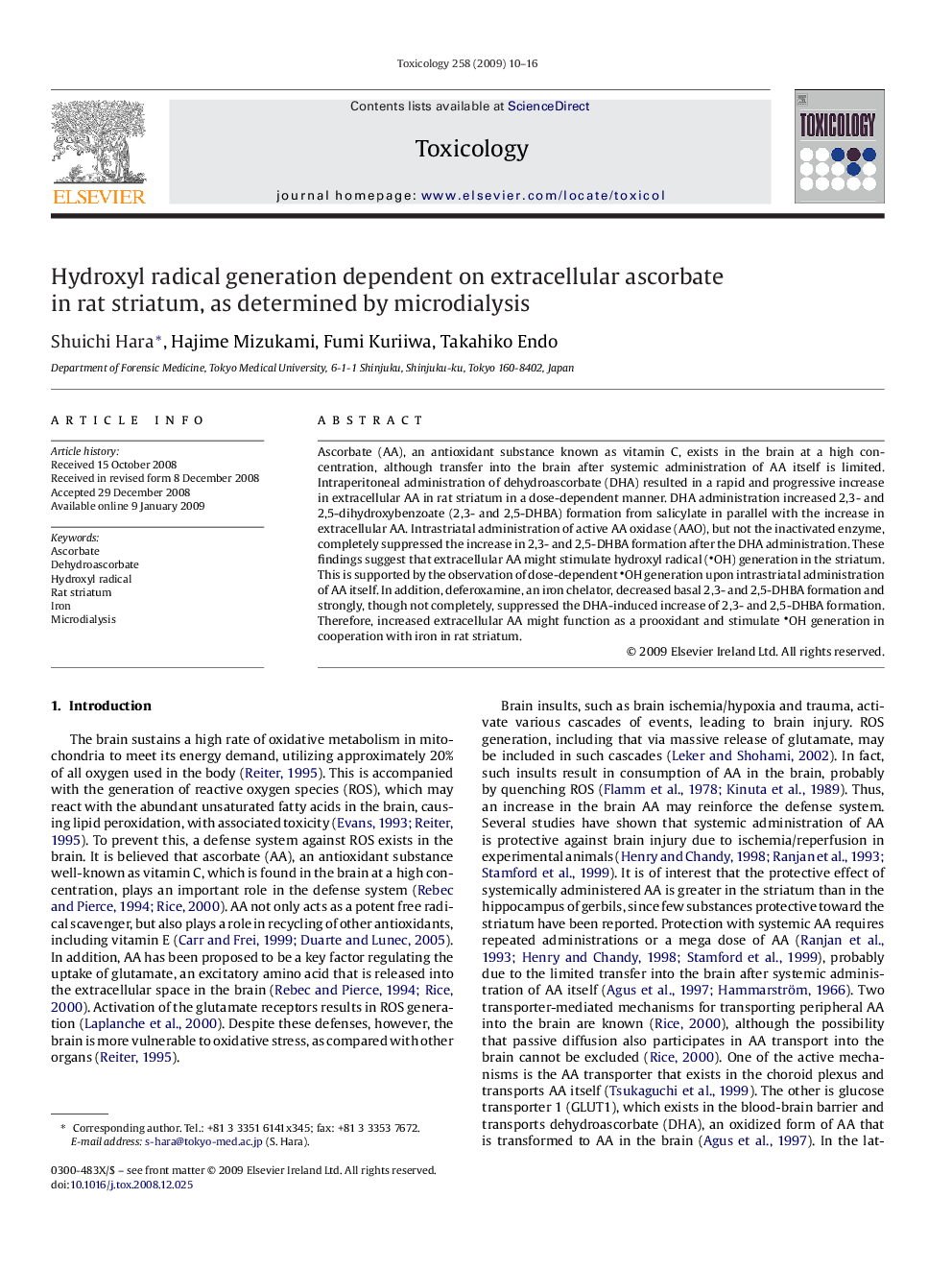| کد مقاله | کد نشریه | سال انتشار | مقاله انگلیسی | نسخه تمام متن |
|---|---|---|---|---|
| 2596864 | 1132554 | 2009 | 7 صفحه PDF | دانلود رایگان |

Ascorbate (AA), an antioxidant substance known as vitamin C, exists in the brain at a high concentration, although transfer into the brain after systemic administration of AA itself is limited. Intraperitoneal administration of dehydroascorbate (DHA) resulted in a rapid and progressive increase in extracellular AA in rat striatum in a dose-dependent manner. DHA administration increased 2,3- and 2,5-dihydroxybenzoate (2,3- and 2,5-DHBA) formation from salicylate in parallel with the increase in extracellular AA. Intrastriatal administration of active AA oxidase (AAO), but not the inactivated enzyme, completely suppressed the increase in 2,3- and 2,5-DHBA formation after the DHA administration. These findings suggest that extracellular AA might stimulate hydroxyl radical (OH) generation in the striatum. This is supported by the observation of dose-dependent OH generation upon intrastriatal administration of AA itself. In addition, deferoxamine, an iron chelator, decreased basal 2,3- and 2,5-DHBA formation and strongly, though not completely, suppressed the DHA-induced increase of 2,3- and 2,5-DHBA formation. Therefore, increased extracellular AA might function as a prooxidant and stimulate OH generation in cooperation with iron in rat striatum.
Journal: Toxicology - Volume 258, Issue 1, 5 April 2009, Pages 10–16